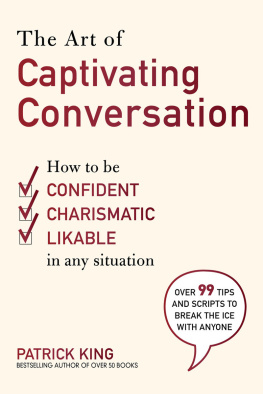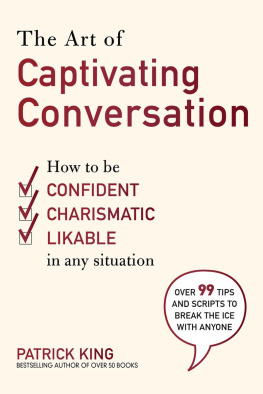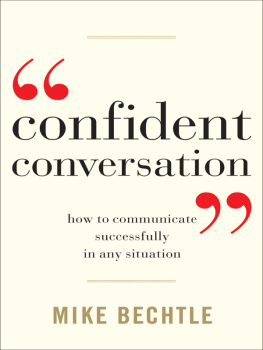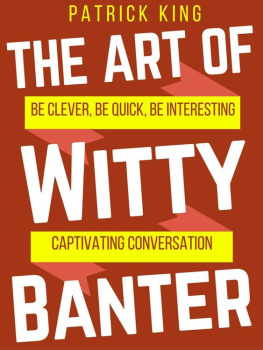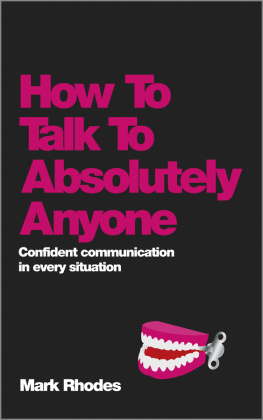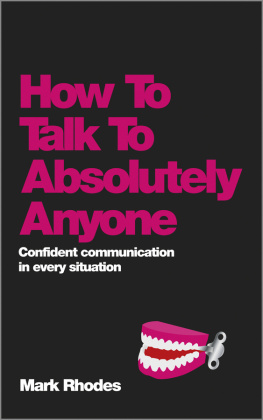


Copyright 2020 by Patrick King
All rights reserved. No part of this book may be reproduced in any manner without the express written consent of the publisher, except in the case of brief excerpts in critical reviews or articles. All inquiries should be addressed to Skyhorse Publishing, 307 West 36th Street, 11th Floor, New York, NY 10018.
Skyhorse Publishing books may be purchased in bulk at special discounts for sales promotion, corporate gifts, fund-raising, or educational purposes. Special editions can also be created to specifications. For details, contact the Special Sales Department, Skyhorse Publishing, 307 West 36th Street, 11th Floor, New York, NY 10018 or .
Skyhorse and Skyhorse Publishing are registered trademarks of Skyhorse Publishing, Inc., a Delaware corporation.
Visit our website at www.skyhorsepublishing.com.
10 9 8 7 6 5 4 3 2 1
Library of Congress Cataloging-in-Publication Data is available on file.
Cover design by Daniel Brount
Print ISBN: 978-1-5107-2906-3
Ebook ISBN: 978-1-5107-2907-0
Printed in the United States of America
Table of Contents
Introduction
Its probably fair to say that I have a lot of titles at this point: social skills and conversation coach, social interaction specialist, international best-selling author, teacher, consultant, course designer, former dating coach, former corporate lawyerthe list goes on.
But in the grand scheme of things, none of those titles really matter, and they certainly arent what might qualify me to write this book. The only title that matters in that regard is that I was a late bloomer.
What exactly does that have to do with The Art of Captivating Conversation ? I think its important to hear these words coming from a former self-proclaimed social recluse who used to have trouble answering the telephone, because it means that these types of dynamic skills that will get you far in life absolutely not are innate; they are learnable with some elbow grease and sweat.
When I was a young man, I was massively shy and anxious around others. I had managed to convince myself that I was in the top .01 percent of introverts, but in hindsight, its clear that was just an excuse for me to shrink into my shell and avoid social situations. When I would go to a restaurant, I would be sweaty when the waiter or waitress came to me to ask for my order. I would rehearse my order endlessly inside my head so I could squeeze out A double cheeseburger and a diet coke flawlessly.
Mail would pile up in my mailbox constantly because every time I wanted to retrieve it, either the mailman or a neighbor would be there and I didnt want to interact with them.
Cheery cashiers at the grocery store were my nightmare, and I would always pick the line with the cashier who seemed the quietest.
God forbid I was required to attend a networking event where I was in a room full of virtual strangers. Id rather swallow broken glass.
I didnt realize it at the time, but I was allowing my life to be ruled by fearfear of judgment, rejection, and failure. I looked at the people in the center of the room with a sense of envy and amazement while feeling that I just wasnt meant for that type of social life.
I carried on like this for much of my adolescence until a pivotal moment my third year of college where I was spending something like my sixth Friday night in a row alone at home. I lived with three roommates but rarely saw them because they were always out enjoying what I thought were activities that just werent for people like me. I glanced through my planner, blank and devoid of social obligations. I suddenly decided to act upon it and change the type of person I was right then and there.
I had reached what I would later call my critical mass of discontentthis sense of discontent with my social life was far stronger than any fear that was holding me back.
The following three months were marked by constant anxiety as I slowly pushed the boundaries of my comfort zone. I had to build my sense of social confidence brick by brick and constantly remind myself that I wasnt only as confident as my most recent foray. I adopted a policy of never saying no, and always saying yes. I began to flex social muscles that had been dormant since I was a child with no concept of judgment. By the end of the school year, I was regularly spending time with my roommates who admitted that they would previously avoid me in the house if I was in common areas because I was so socially stunted.
This is the point in my life I refer to when I say that I bloomed, and thats why my self-imposed title of late bloomer is so important.
Its not helpful for a chronic introvert to hear advice from someone who has always been that person in the center of the room. They may be successful, but they wont be able to deconstruct and explain their actions because its been so instinctual and natural to them. Its the advice equivalent of someone who grew to be seven feet tall at age thirteen telling people that its simple to be a basketball playeryou just need to grow taller.
While thats true, its not information that people can use and incorporate into their daily lives. Useful information in the course of teaching comes from those who understand struggle and pain, and ultimately share the process used to relieve themselves of that pain. You already understand why you picked this book up. Youre reading this book for the how , and thats what I hope to arm you with in spades. Youve seen where I came from; obviously something worked.
How did I end up coaching and teaching social and conversation skills? Thats another story in itself.
I used to be a corporate lawyer, but it quickly became apparent that I absolutely hated every aspect of itnot uncommon by itself. I also found that it was a terrible fit for my personality. Things I had prided myself on, such as my interpersonal skills, personality, and sense of creativity, were traits that were expressly rejected by the law.
Law, in fact, is about jamming everything in your path into the strict confines dictated by thousands of cases over the years, which means that your role is essentially a high-priced hammer. Thats why lawyers are seen as risk-aversetheyre just acting within those strict confines. After I graduated and began to work full-time, I can safely say that I started to dread going into work by the third week. Like someone who had married a partner who turned out to be lying about their identity, I developed a wandering eye.
I always had a keen interest in human interaction and datingit was what I would always talk about in my free time, with friends and even strangers. I just liked hearing about these situations and dissecting them to understand the why . Tell me about your date and what did he text you afterwards were always more compelling to me than asking about someones work.
On a lark, I started offering to write online dating profiles for my friends so I could hear more of these stories. When you do anything that many times, you develop a systemized approach, and on another lark, I decided to publish my first book on online dating.
The book sold unexpectedly well, so I started coaching, and I also became a matchmaker, working for some of Silicon Valleys richest for a short period of time.
What was ultimately missing, however, was that it felt like I was only teaching principles that were designed to lead to a very limited set of outcomesgetting or seducing someone. In the grand scheme of things, it started to feel insignificant, and even though a younger me would have loved that knowledge, a younger me would have been in dire need of more foundational, holistic skills.
Next page
